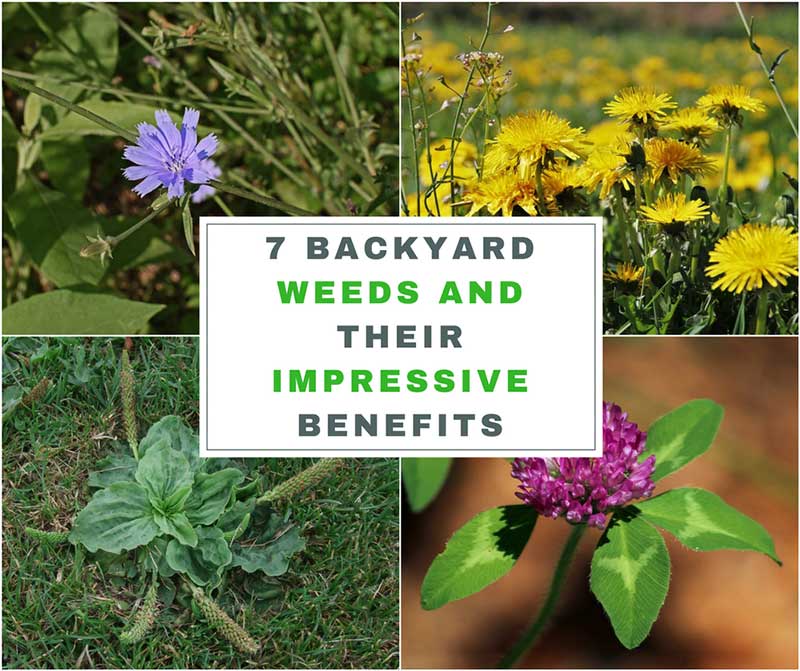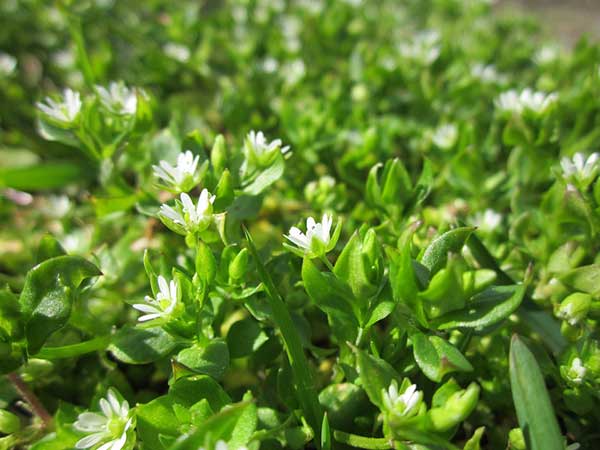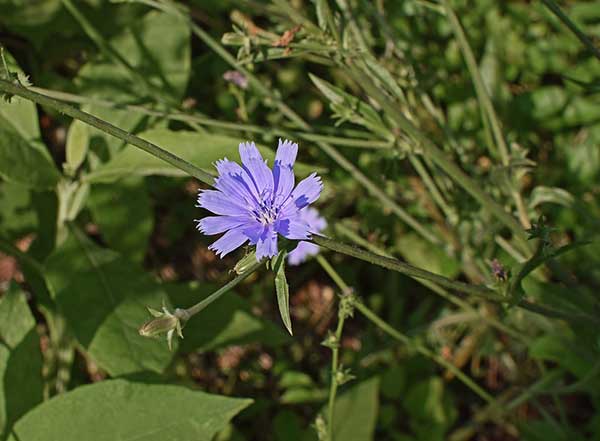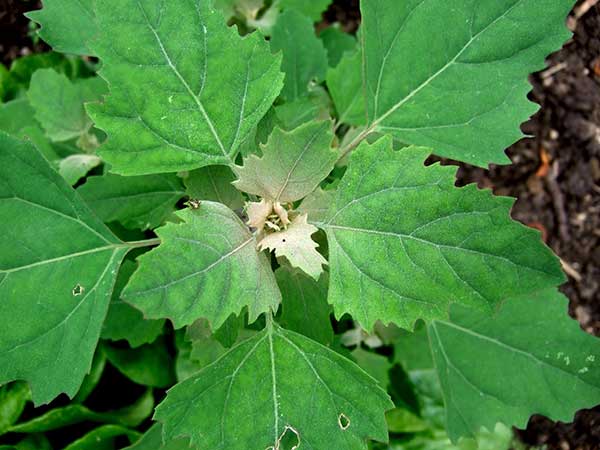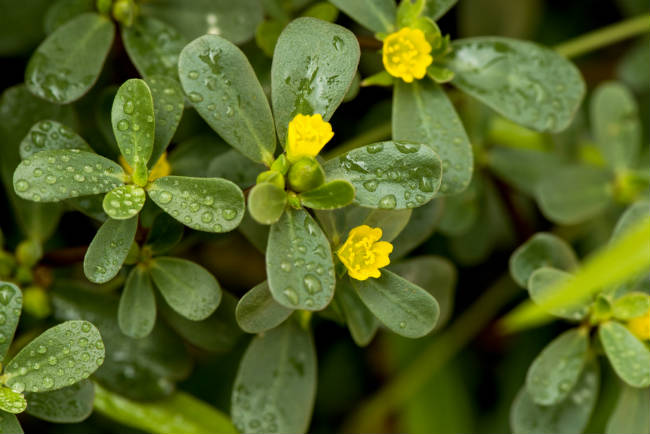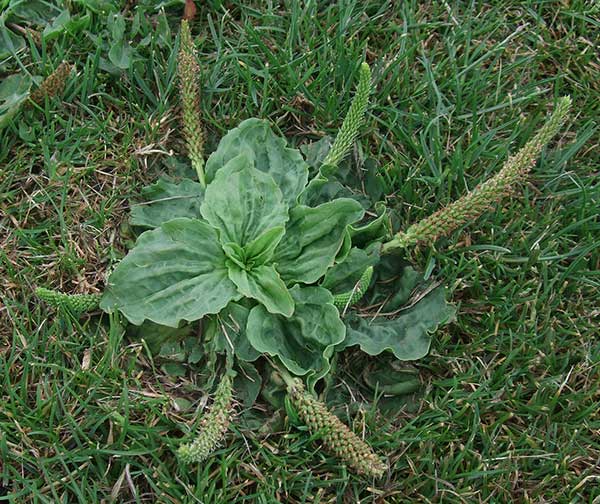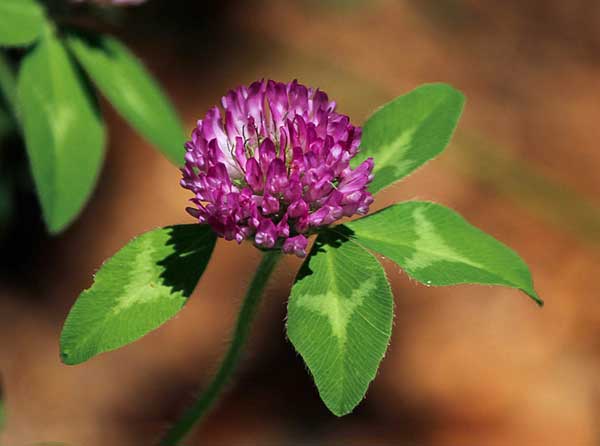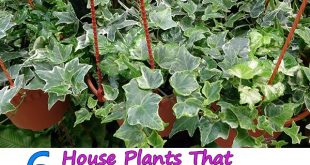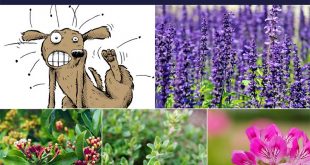7 Backyard Weeds and Their Impressive Benefits
Long ago, our ancestors understood that all plants have properties, not just the ones we purposefully grew. Over the years, we lost the knowledge about which wild plants and weeds have health benefits that we might desire. Instead, we spend money on weed killers to eradicate them from our property.
We are gaining this wisdom back and slowly learning how to tap into the benefits of our backyard weeds. Don’t make an attack plan to get rid of all the weeds. Take a serious look at what is growing outside and see if you can use any of these weeds for your health!
Chickweed
Most backyards have an abundance of chickweed! It is a fantastic source of vitamins A, D, and C! Chickweed also contains iron, calcium, potassium, zinc, and phosphorus. For such a small plant, it packs a powerful punch. You can pick it fresh, then add to your salads. Many people compare the flavor to spinach.
For medicinal purposes, chickweed is a treatment for minor cuts, burns, eczema, and rashes. Some people use it as a treatment for irritable bowel syndrome.
Chicory
Many nations in Europe still consider chicory a beloved plant for meals, despite its rather bitter flavor. Some say that boiling the leaves first before adding to your dishes helps to remove that bitter flavor. The roots are also edible, typically backed and ground. Chicory root is a substitute for coffee if you are all out!
Chicory grows with a light, blue flower, and can often be found along roadsides. The medicinal purposes revolve around internal issues. When used as a tonic, chicory can stimulate your appetite or calm an upset stomach. It also can aid with constipation issues.
Dandelion
Those lovely, yellow flowers dotting your front yard are good for something! Dandelions are edible and make delicious jelly, wine and even can be used for salads. This well-known weed contains vitamins A, B, C, and D, along with iron, zinc, and potassium. Something so frustrating is beneficial!
Our ancestors understood the power of the dandelion, and they tapped into it for several ailments. Most commonly, dandelions are used as a diuretic, appetite stimulant and heartburn. If you soak dandelion flowers and create an infused oil, you can create salves and ointments for treating skin problems or minor cuts.
Lamb’s Quarters
Lamb’s quarters is a weed that will dot your backyard throughout the summer. The plant produces black seeds that contain high levels of protein, similar to quinoa. They make a healthy additive to any dish you are cooking. Not only does it contain proteins, but lamb’s quarter also provides vitamin A, calcium, phosphorus and potassium!
The rest of the plant is edible as well. The shoots and leaves can be eaten raw or cooked. If your dish calls for spinach, try replacing it with lamb’s quarter!
If you want to tap into the medicinal benefits of lamb’s quarter, try steep a strong tea with the leaves. The leaves help to treat stomach and digestive problems.
Purslane
Purslane likes to grow in the cracks of your sidewalk, but you also can find it along the edges of your garden beds. If you want to consume purslane, make sure you select a place to harvest that wasn’t sprayed with weed killer! It does take some time to get used to the taste of purslane. The taste is sour and salty, not something that we want in dishes. However, you can try adding it to soups and stews. Some people like to bread and fry the leaves!
This simple weed is a nutritional powerhouse, containing more omega-3 fatty acids than any other leafy vegetable you might eat each day! Purslane also contains vitamins A, C, E, as well as calcium, potassium, magnesium, and iron!
Purslane has been used for centuries in medicinal medicine. Their leaves are a treatment for insect bites, bee stings, sores, diarrhea, and hemorrhoids.
Plantain
Plantain grows in most backyards. Chances are you’ve walked over it hundreds of times and just assumed it was a regular weed, growing just to annoy you. Now, don’t confuse this plantain with the Caribbean fruit. They are very different!
This weed can be used to treat burns, stings and other skin wounds. You can create an infused oil and then a salve or ointment to apply to your skin. When used in a tea or tincture form, plantain can treat bronchitis, sore throats and the common cold.
Plantain is also edible. You can consume the leaves raw or cooked. It is best if you pick the smaller leaves because the old ones tend to be tough. Eating plantain adds large doses of vitamin A to your diet, as well as vitamin B1 and riboflavin.
You’ll never pass over this simple plant ever again! Looking for more information on Plantain read here
Red Clover
Red clover should be left in your backyard simply because it attracts bees. While bees might be a threat to your bare feet if you walk in the yard, we need all the bees possible to pollinate our plants!
Red clover has medicinal benefits, such as its anti-inflammatory properties. Some say that red clover can be used as a treatment for cancer, but there is no evidence to conclude that this is true. You can try it at your own risk! One thing to note is that red clover contains high levels of isoflavones, which can act like estrogens in your body. Consume in small amounts.
Consuming red clover adds loads of great nutrients to your body. They contain calcium, chromium, magnesium, niacin, phosphorus, potassium thiamine and vitamin C. That is a lot of vitamins for one small plant!
There are so many more plants that are growing in your backyards that contain health benefits. Stinging nettles and violets are two more than probably dot your property.
It is time that we reclaim this knowledge and start to tap into the benefits offered by Mother Nature. These plants grow wild and are there for us to use. Make sure that you harvest from areas that are free of any chemicals that could cancel out their benefits.
 Home and Gardening Ideas At home and Gardening ideas we believe inspiring readers about homesteading, self sufficiency
Home and Gardening Ideas At home and Gardening ideas we believe inspiring readers about homesteading, self sufficiency
